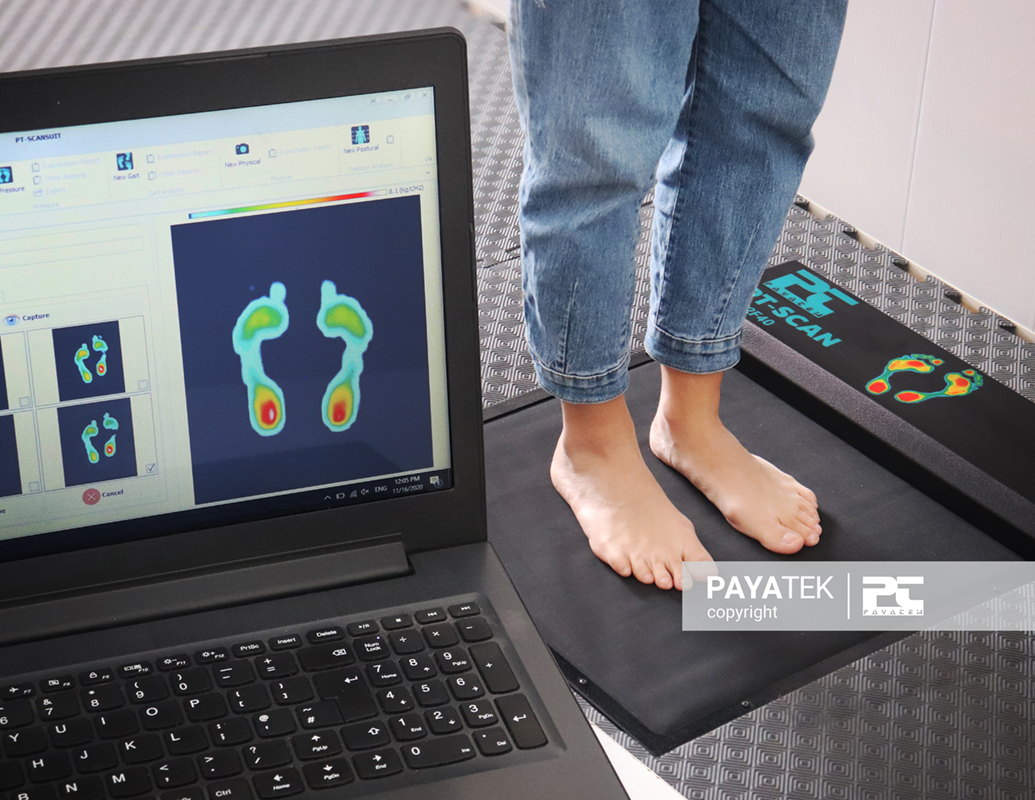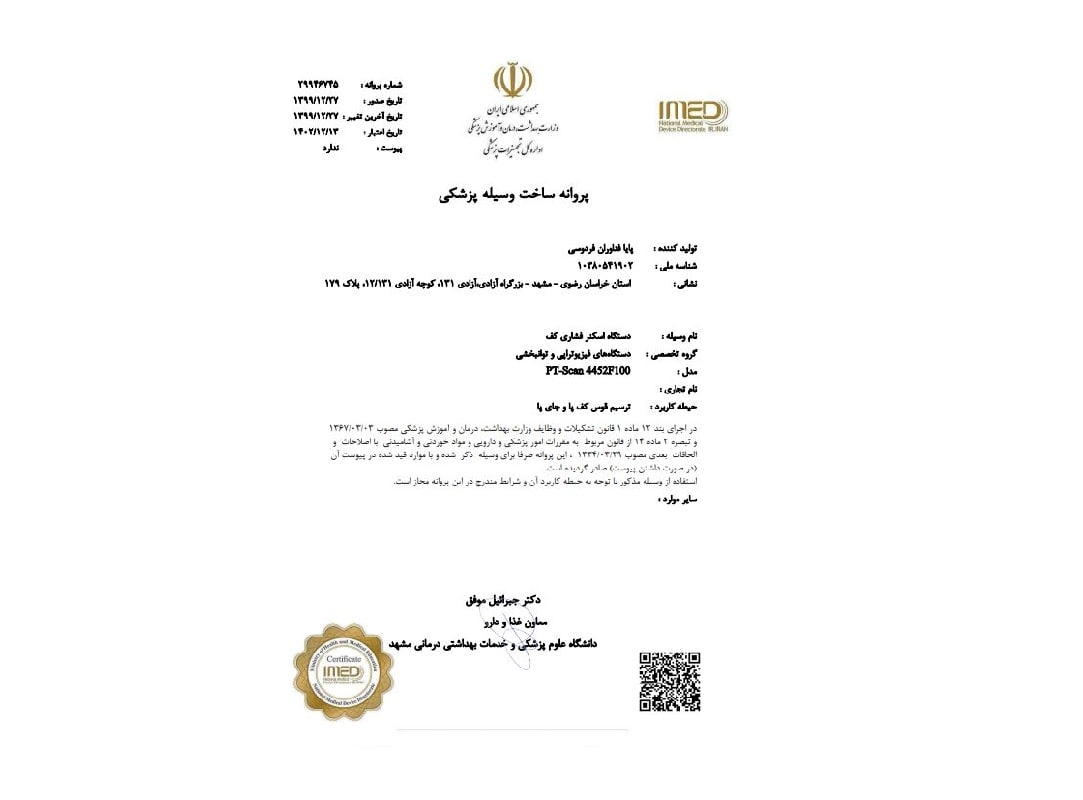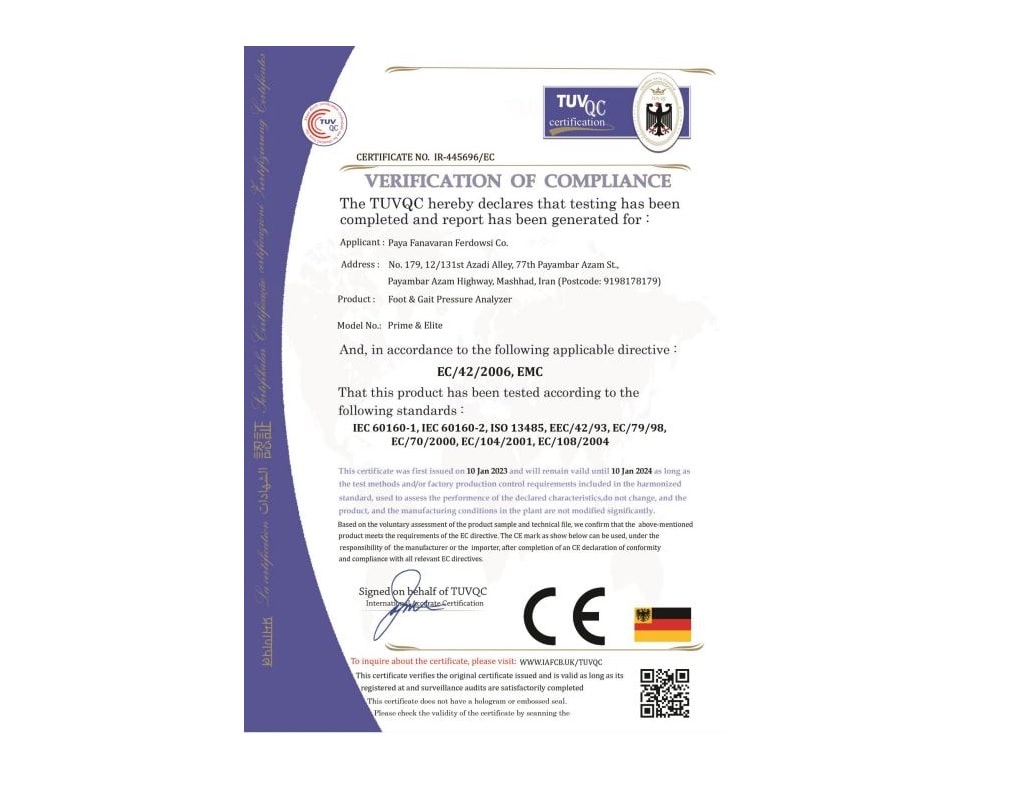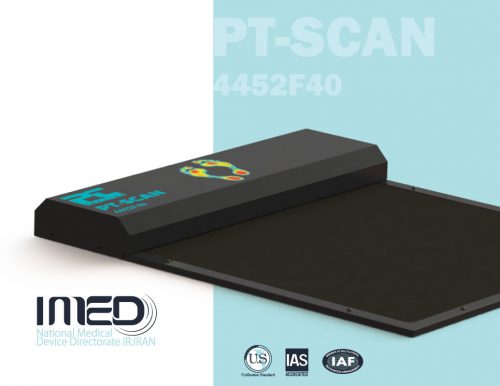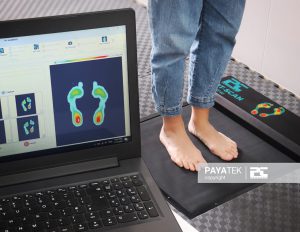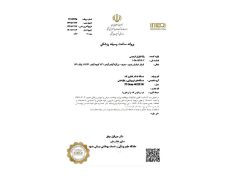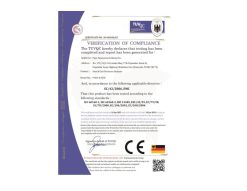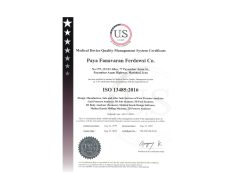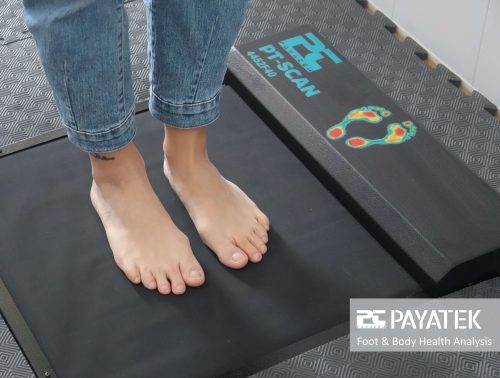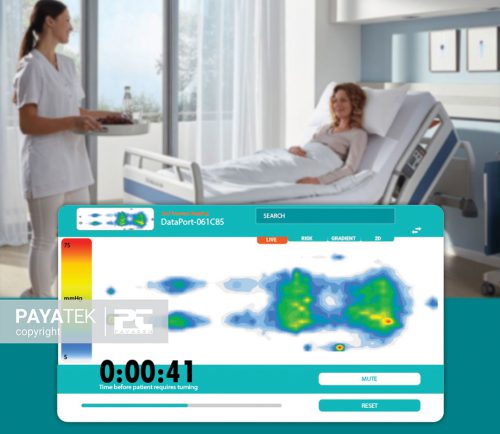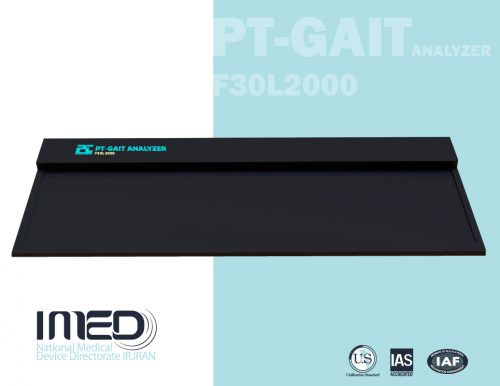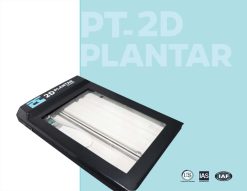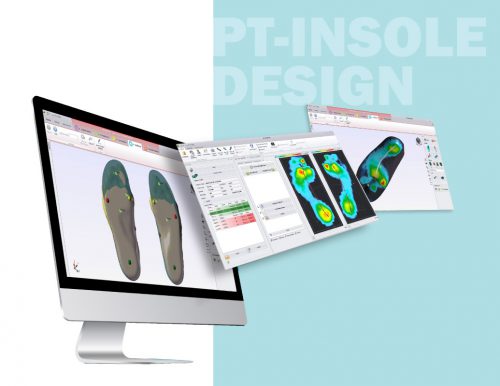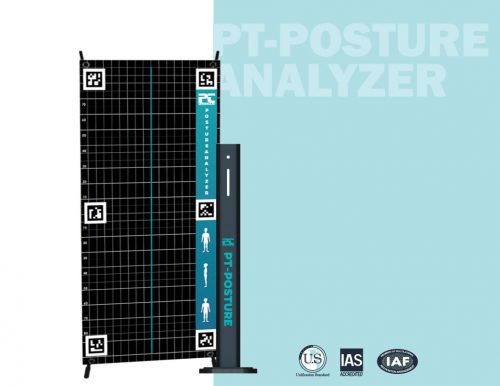Foot Pressure Scanner | PT-SCAN
Foot pressure scanner is a high resolution/speed foot scanner to capture plantar pressure and plantar force in standing position or walking (stance phase) for both adults and children. A foot pressure scanner records and analyzes foot pressure while standing or walking. An accurate and cost-effective foot scanner that measures pressure exerted on different parts of the foot sole, gathers high-resolution scans, and identifies the plantar pressure profile.
PayaTek foot pressure scanner meets all the needs of specialists in diagnosing and choosing the best treatment method, by thorough examination and providing precise details of standing, walking and maintaining balance.
Moreover, the PayaTek Foot Scanner’s powerful and detailed software makes it possible for specialists to measure and examine any part of the sole accurately.
PayaTek foot scanner collects accurate and reliable pressure data for analyzing foot function and gait. Easy interpretation of foot performance is demonstrated with high-quality graphics and reliable indicators in Payatek’s foot scanner. This includes highlighting the center of pressure, the COP (gait line), the maximum pressure during plantar contact and etc.
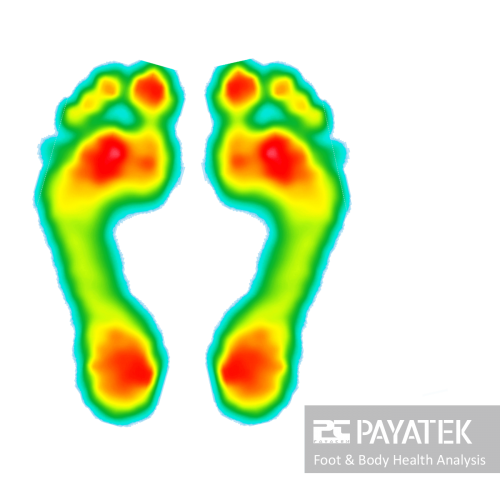
Effective integrated foot scan
PayaTek foot scanner covers 3 types of foot scan: static, dynamic and static balance.
Easy patient follow-up. Easy file generation for patients and saves all test results in the software.
Measure the mean foot pressure and maximum pressure for a more accurate diagnosis.
Display the center of pressure in the dynamic test with a maximum of 200 frames per second.
Examine the body posture and standing using foot pressure scanner
Lack of proper weight distribution is the most common disorder of the skeletal system in patients’ legs. In a healthy body the center of body gravity is distributed equally between the two legs in the standing position. As a result, the center of pressure will be situated equally distance from both legs. But some people put most of their weight on one leg (the left or right leg). This means that the center of gravity of their body tends to be on the left or right side. Some put most of their weight on their toes, and as a result, their center of gravity tends to move forward. Some put most weight on their heels, and their center of gravity tends to the back of their body.
Each of these situations indicates a failure and a skeletal-muscular problem in patients who need care, prevention of progression, and, as a result, treatment. The accurate and comprehensive reports of the PayaTek foot pressure scanner include information on how the patient’s weight is distributed in the left, right, front, and back parts of the foot.
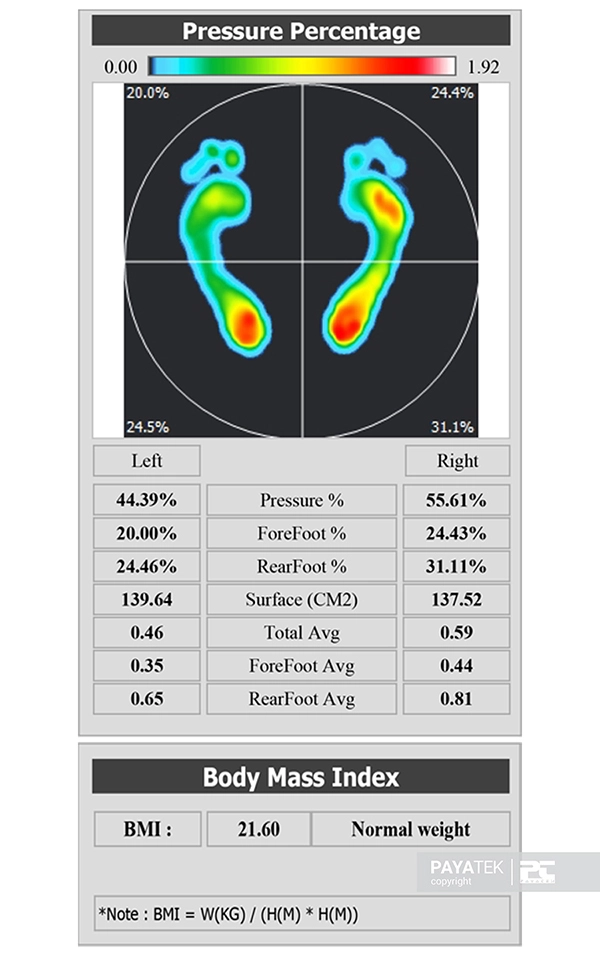
Analyze the stance phase of gait cycle in a single step using foot pressure scanner
Biomechanics gait analysis experts divide gait into two phases: stance and swing. The stance phase starts when the foot is in contact with the ground, and the swing phase is when the foot is off the ground. The normal adult gait cycle involves heel strike, stance, and then toe-off. In other words, first the heel contacts the ground, then the midfoot, and finally the forefoot and toes. At this stage, all the body weight or weight-bearing is on one leg.
Some patients, due to various problems with the knees, pelvic, nervous system problems, etc., do not have a normal gait. This abnormality of gait in the stance phase can be analyzed and checked by the PayaTek foot scan platform. It records foot pressure information at high speed and provides accurate reports such as the center of pressure (COP), COP line, frame-by-frame evaluation of foot contact with the ground, the separation pressure of different foot regions, floor reaction force, foot axis angle, etc. Also, it is possible to do a detailed study of the patient’s gait pattern.
Checking the balance with PayaTek foot pressure scanner
Foot pressure scanner assesses patients’ sense of balance by using famous tests like Romberg. In this test, the patient stands on the foot mat in a normal position, and his center of gravity is monitored and recorded for a certain period of time. The accurate chart and pressure values represent the patient’s center of force in standing mode. This test allows specialists to make early detection and offer the best solutions for patients’ problems.
Foot pressure scanner is used to:
Diagnosis of foot arch type with both static and dynamic foot scan
The sole of the foot has three arches: two longitudinal arches (medial and lateral) and an anterior transverse arch. These arches are formed by the tarsal and metatarsal bones and are supported by the ligaments and tendons of the foot. Patients who are facing pain in the leg and back area usually have structural problems of the foot and ankle, and the correct evaluation of these patients is very important
One of the most important applications of PayaTek foot scanner is to detect the type of plantar arch and check the distribution of plantar pressure in the longitudinal and transverse areas of the foot arch.
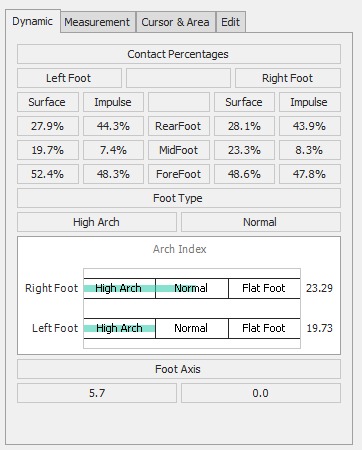
You can see an example of a foot scan report of a person with a flat foot in the image below:
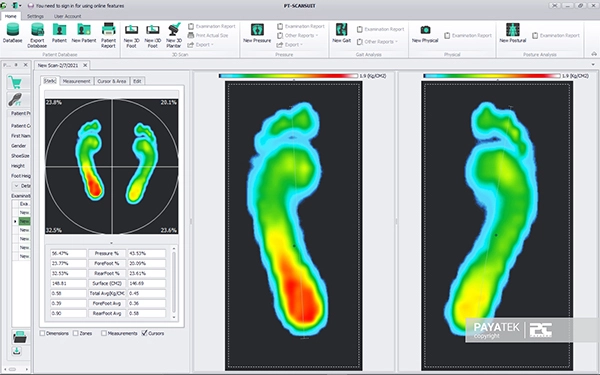
And people with high arches should have a foot pressure scan as follows:
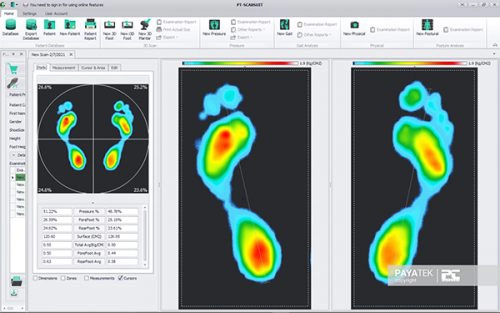
PayaTek foot pressure scanner automatically identifies the type of the patient’s foot by providing a pressure image of the sole and provides it to the doctor in the form of an output report.
An example of the report of the device in detecting the foot arch type is shown in the image below:

Identify areas prone to ulcers in neuropathic foot
The cause of diabetic foot ulcers is usually the deformed structure of the foot skeleton due to neuropathy, which causes unusual plantar pressures. Research shows that 20% of hospitalizations for diabetics are due to foot ulcers. Specialists use a foot pressure scanner to identify areas prone to ulcers in a diabetic patient and to take preventive measures such as using appropriate insoles and shoes.
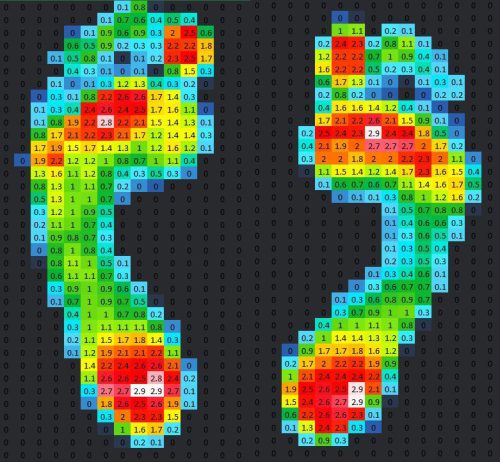
Lower extremity rehabilitation exercises training
Many diseases related to foot and back pain can be treated with appropriate corrective exercises. The intensity and correct direction of these exercises are accurately calculated using a foot pressure scanner.
Determine the asymmetry of the foot pressure profile between the left and right foot
Asymmetry of foot pressure profiles and force diagrams between left and right feet in three areas of forefoot, midfoot and rearfoot is an accurate report that allows a comprehensive and accurate study in kinematics and disease recognition and selection of the best treatment plan.
Observe the COP line and dynamic weight transfer then check the postural stability
The COP Line represents the coordination of the nervous and muscular systems. Any abnormalities in normal gait and balance are evident in the COP. Also, foot scanner examining the angle of this curve, so we can find anomalies that are directly related to the legs, such as supination and pronation.
In-depth analysis of foot and gait performance using balance screen charts for heel, mid-foot and forefoot
PayaTek foot scanner using balance screen charts the amount of heel rotation during a step and the balance of force in different plantar areas. Using this diagrams and comparing them with the normal state, it is possible to determine where each correction element should be placed in the designing a customized medical insole.
Follow the treatment process and confirm the effectiveness of the treatment plan
Patient satisfaction with the chosen treatment plan greatly enhances the effectiveness of treatment. A foot pressure scanner is a device that helps monitor the healing process. In this way, simply communicate effectively with the patient and gain his trust in the treatment plan
Investigating the cause of leg & back pain in foot scan
PayaTek foot pressure scanner analyzes the maximum and average pressure applied to the foot sole. High-pressure points are clearly visible in the maximum and average foot pressure scanner reports, and the abnormal gait patterns of each individual can be recognized in the balance screen charts.
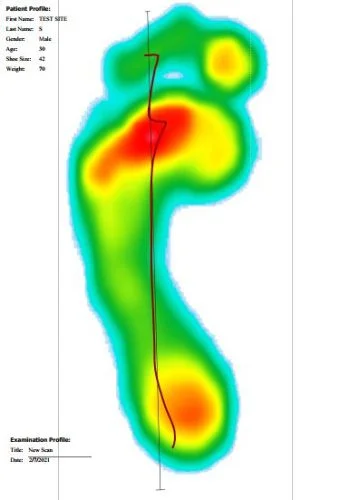
Its powerful software allows you to segment the foot for a more detailed analysis of foot function and identify the area that has the most pressure, so you can be sure that you always have objective and accurate information about foot function abnormalities and their treatment. PT-SCAN segments the foot into 13 regions and you have complete force/pressure-time information for each region.
- Tars 1,2,3,4,5
- Metatarsals 1,2,3,4,5
- Midfoot
- Heel medial
- Heel lateral
Recognizing the Sensitive Regions of Ulcers in Diabetic Patient’s Foot using foot scan results
Excessive pressure on the foot sole regions during walking and standing is one of the causes of diabetic foot ulcers. This pressure can be applied to many regions of the patient’s foot, including the heel, under the metatarsals, the arch in persons with Charcot’s disease, and the thumb.
One of the treatments provided by diabetes clinics to its patients is diabetic foot ulcer treatment. Specialists utilize a foot pressure scanner to detect areas of a diabetic patient’s foot that are prone to ulcers and take preventative steps like using insoles and suitable shoes.
Using appropriate insoles is the most efficient therapy for diabetics with high-risk ulcer regions.
Examinations performed by PayaTek foot scanner:
PayaTek foot Scanner “PT-SCAN” performs three tests: static, dynamic (gait stance phase) and static balance.
Static test in PayaTek Foot Scanner – Foot pressure measurement in static mode
In the static foot scan test, the patient stands on the surface of the device normally and in a standard position.
The software determines the patient’s foot pressure distribution data for each foot, arch type of the foot in static position, the displacement of body center of gravity ancompares the similarity of left and right foot.
Dynamic test in PayaTek Foot Scanner – Foot pressure measurement in walking mode
In the dynamic foot scan test, the patient normally takes a step on the device and passes. Each foot (left and right) is tested separately. The software provides detailed reports about arch type in gait mode, COP Line (center of pressure), foot axis angle, high pressure points of the foot in gait cycle (Avg.& Max.) and…
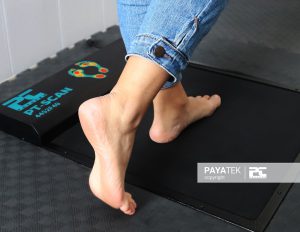
Static Balance test Foot Scan – Scan center of gravity shifts while maintaining balance
In this test, the person stands on the pressure mat for 10 seconds and tries to maintain balance. The duration of the test can be changed at the discretion of the doctor. One of the well-known tests to check the balance and proprioception of patients is the Romberg test, which can be implemented using this device.
Where can we do foot scan?
Foot scans and specially foot pressure scans are used in fields such as:
- Podiatrists
- Technical orthopedics
- Rehabilitation
- Physiotherapy
- Corrective exercises
- Endocrinology
- Diabetes
- Wound care
PayaTek foot scanner features:
- Smooth and accurate display of foot pressure distribution
- Scanning rate up to 200 Hz
- Perform three tests of static, dynamic and static balance
- Low mat height 0.7 cm
- Easy plug and play technology with USB connection
- Compatible with gait lab technology, such as EMG and motion capture systems
- For multi-step analysis, check out our Gait Analyzer for human gait analysis

 فارسی
فارسی

